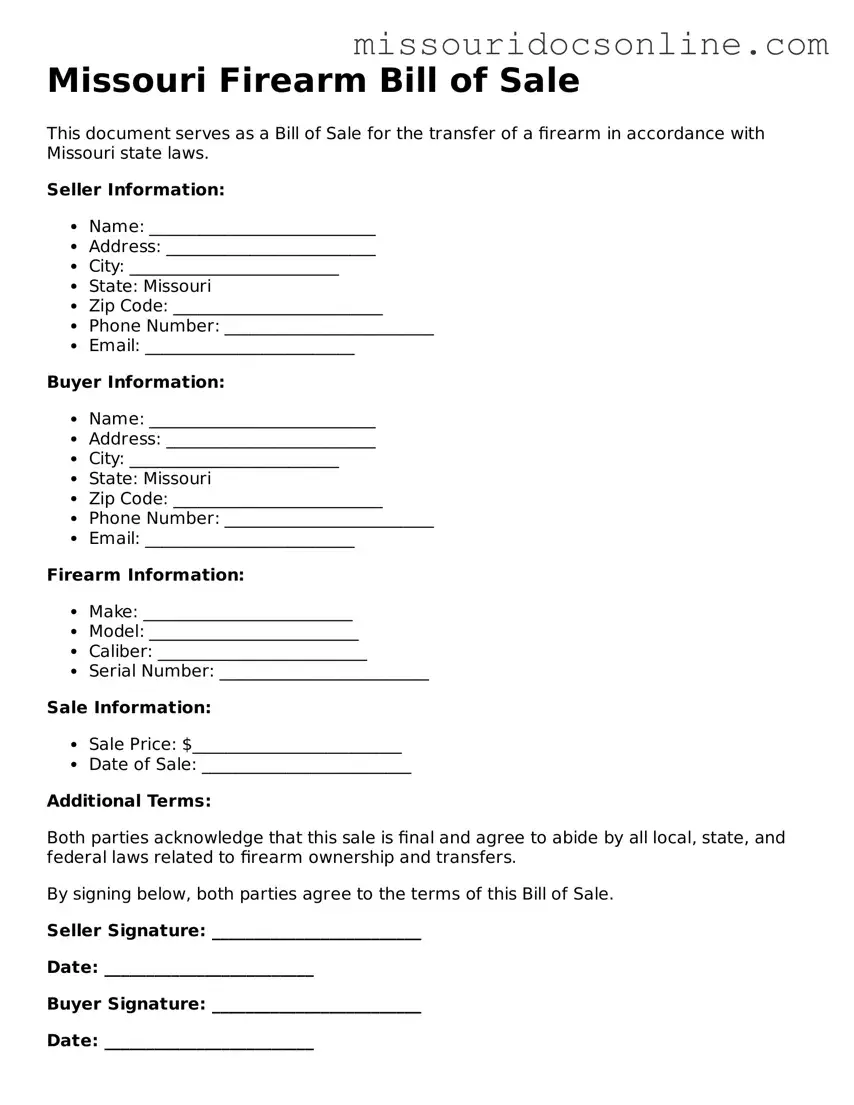Attorney-Approved Firearm Bill of Sale Form for Missouri State
The Missouri Firearm Bill of Sale form is a legal document that records the sale or transfer of a firearm between two parties. This form serves as proof of ownership and details important information about the transaction, including the buyer, seller, and firearm specifics. Understanding how to properly complete this form is essential for anyone involved in the buying or selling of firearms in Missouri.
Ready to get started? Fill out the form by clicking the button below.
Access Firearm Bill of Sale Editor
